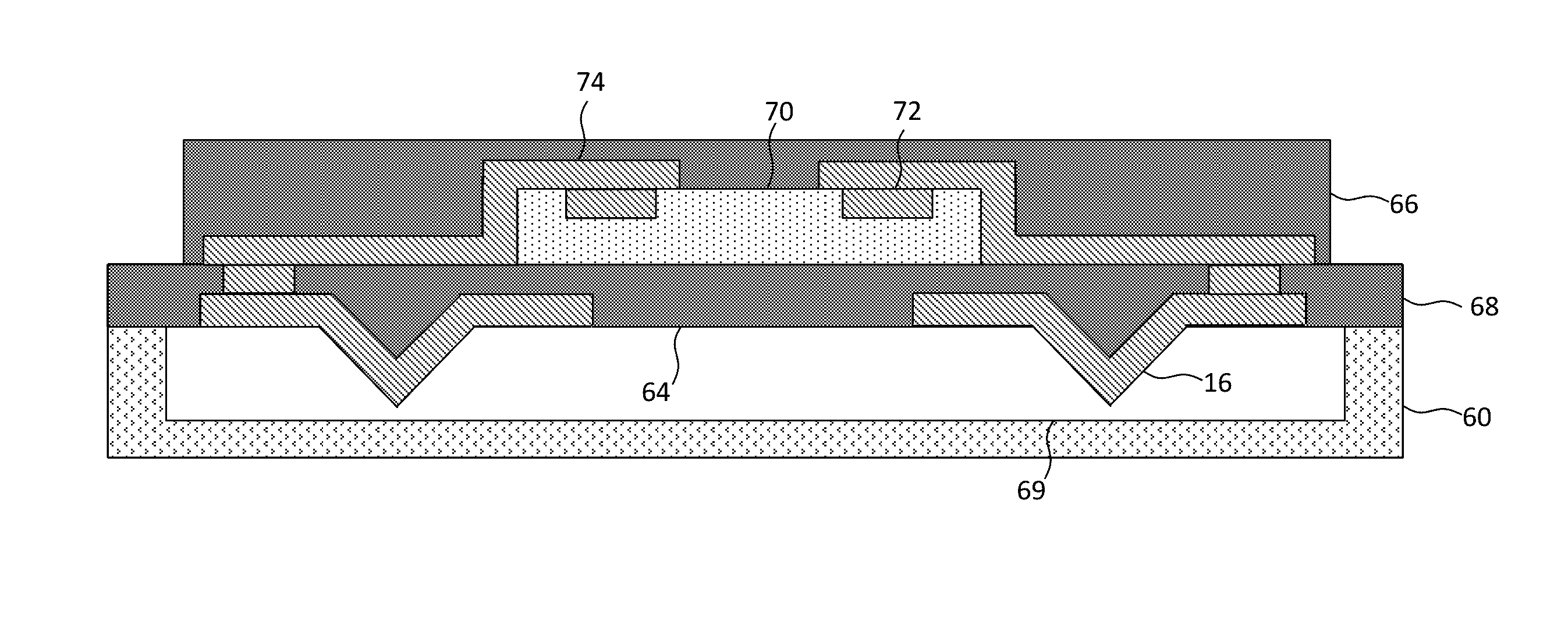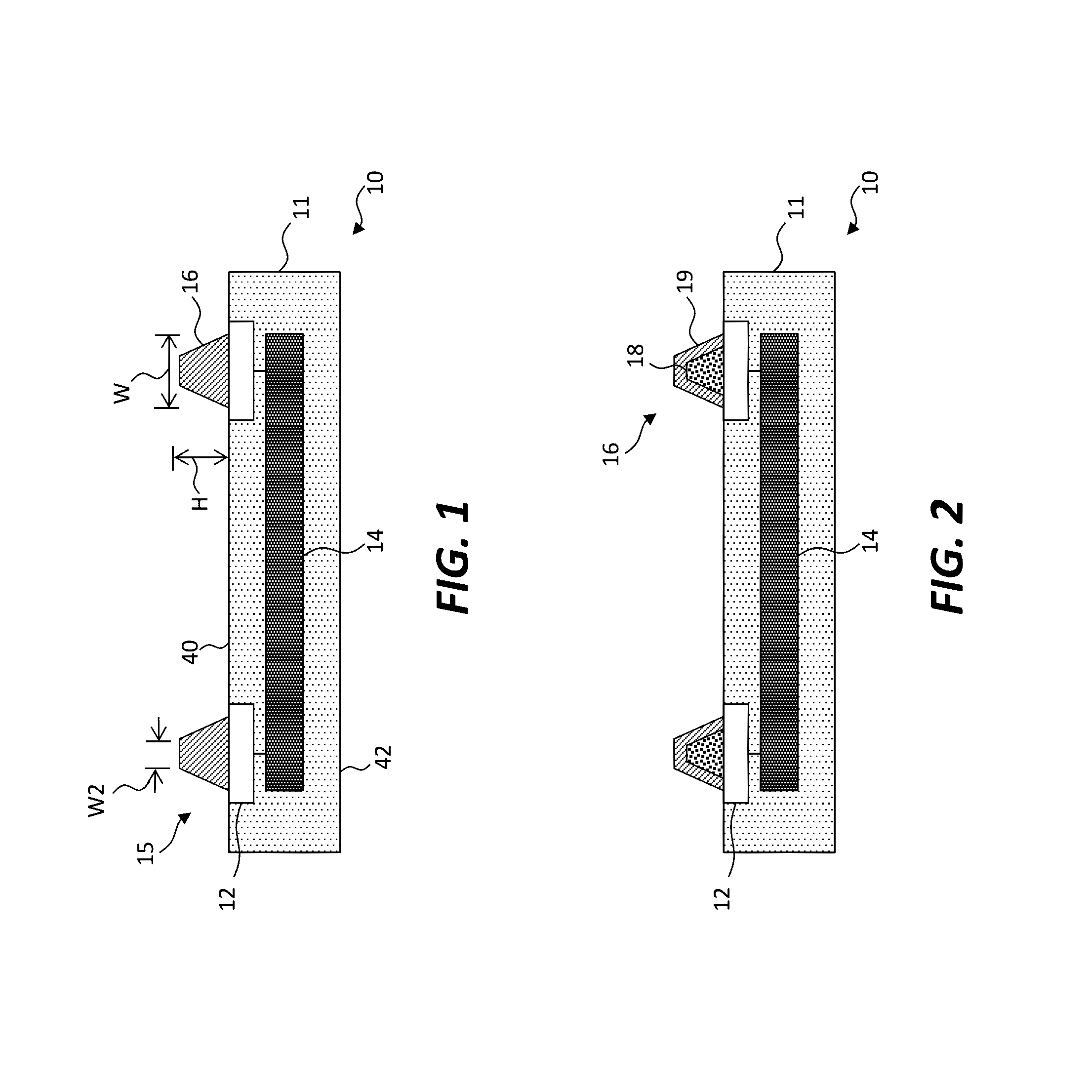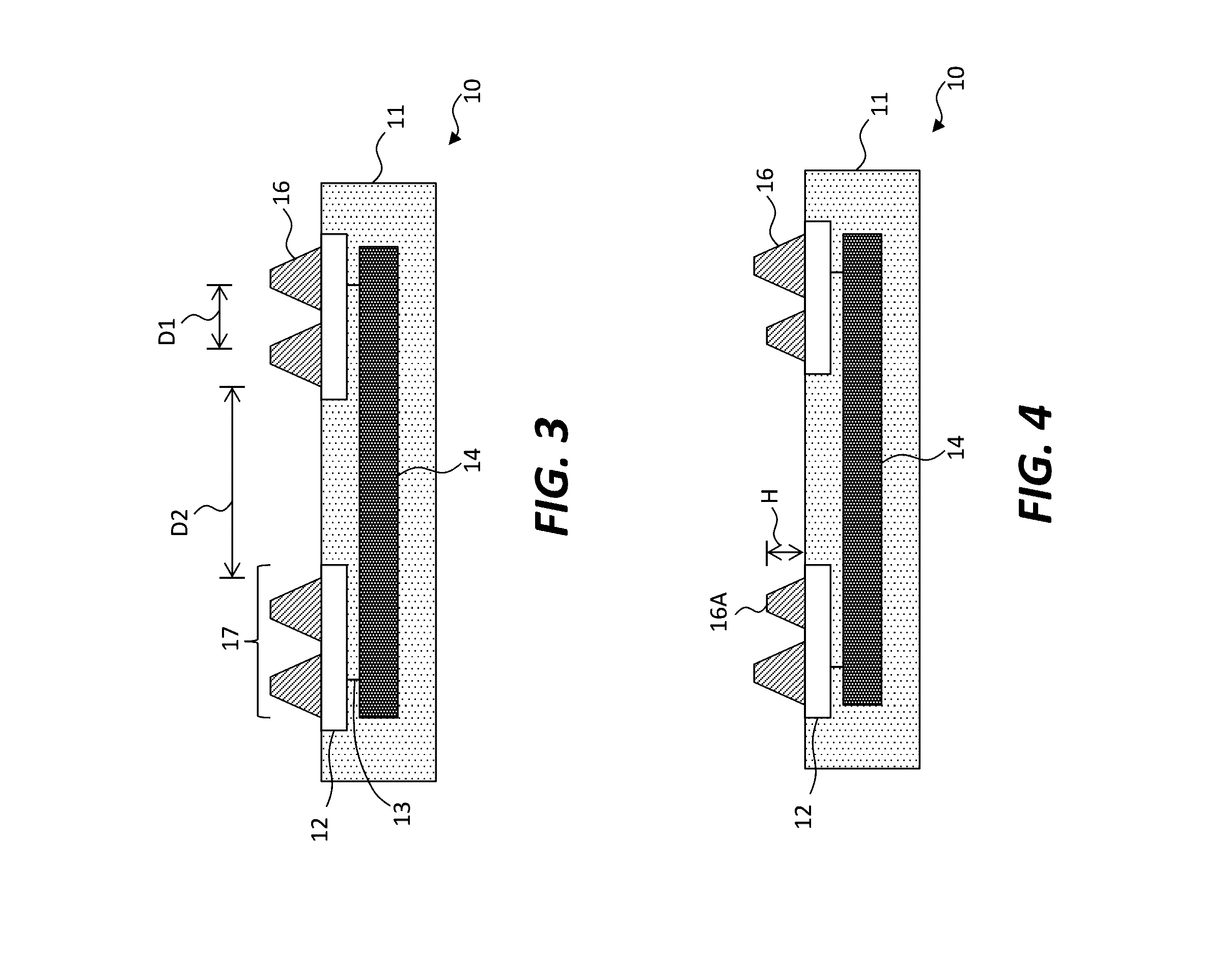Chiplets with connection posts
a technology of connection posts and chiplets, applied in the direction of final product manufacturing, sustainable manufacturing/processing, semiconductor/solid-state device details, etc., can solve the problems of wasting material and processing costs, reducing the performance of above-the-line integrated circuits, and reducing the performance of other integrated circuits. , to achieve the effect of reducing process steps, simple and inexpensive electrical interconnection process
- Summary
- Abstract
- Description
- Claims
- Application Information
AI Technical Summary
Benefits of technology
Problems solved by technology
Method used
Image
Examples
Embodiment Construction
[0116]The present invention provides a structure and method for electrically connecting relatively small electrical components such as integrated circuit chiplets to a relatively large destination substrate in an efficient and cost-effective way. Referring to the cross section of FIG. 1, in an embodiment of the present invention, a component 10 includes a plurality of electrical connections 15 on a process side 40 opposed to a back side 42 of the component 10. Each electrical connection 15 includes an electrically conductive connection post 16 protruding from the process side 40. The electrical connection 15 can also include a component contact pad 12 on which the connection post 16 is disposed and to which the connection post 16 is electrically connected.
[0117]The component 10 can be an active component, for example including one or more active elements such as electronic transistors or diodes or light-emitting diodes and photodiodes that produce an electrical current in response t...
PUM
 Login to View More
Login to View More Abstract
Description
Claims
Application Information
 Login to View More
Login to View More - R&D
- Intellectual Property
- Life Sciences
- Materials
- Tech Scout
- Unparalleled Data Quality
- Higher Quality Content
- 60% Fewer Hallucinations
Browse by: Latest US Patents, China's latest patents, Technical Efficacy Thesaurus, Application Domain, Technology Topic, Popular Technical Reports.
© 2025 PatSnap. All rights reserved.Legal|Privacy policy|Modern Slavery Act Transparency Statement|Sitemap|About US| Contact US: help@patsnap.com



